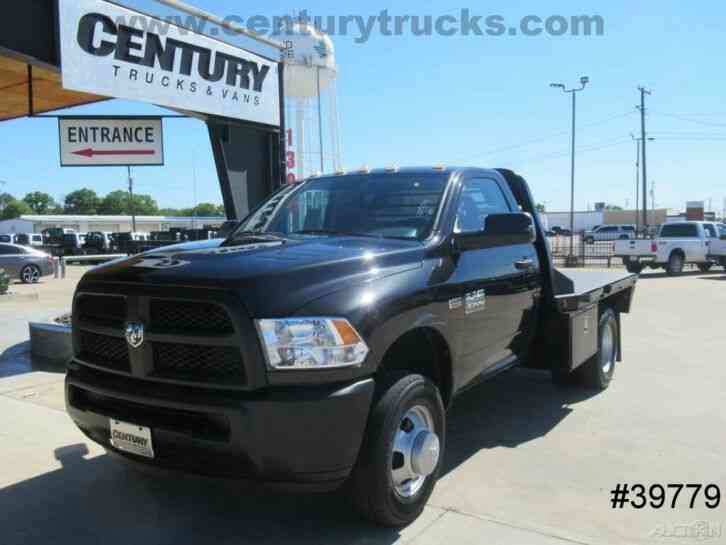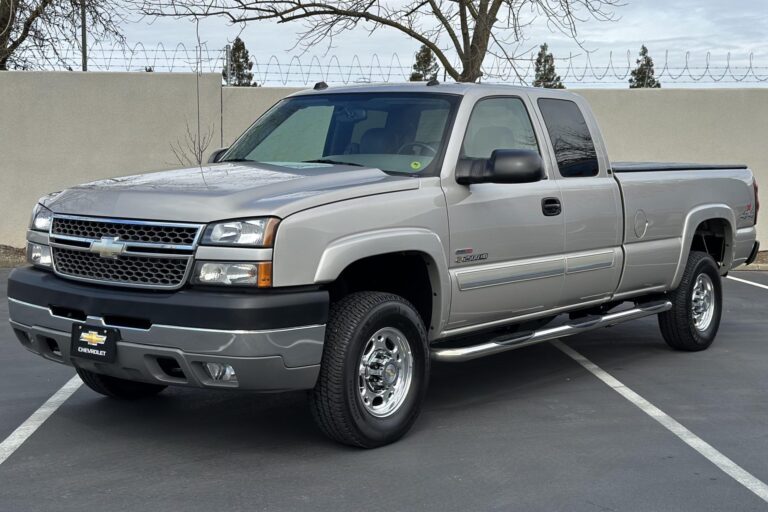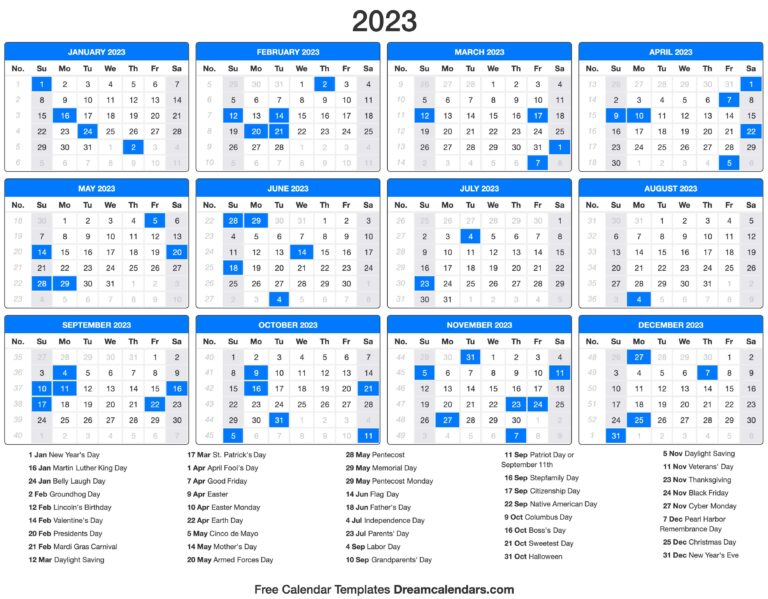3500 DRW Trucks For Sale: Your Ultimate Guide to Heavy-Duty Hauling
3500 DRW Trucks For Sale: Your Ultimate Guide to Heavy-Duty Hauling cars.truckstrend.com
Introduction: The Powerhouse You Need
In the world of heavy-duty vehicles, few designations command as much respect and capability as the "3500 DRW." Standing for "3500 series Dual Rear Wheel," these formidable trucks are the undisputed workhorses of the road, designed to tackle the most demanding towing and hauling tasks with unwavering stability and power. Whether you’re a seasoned contractor needing to transport heavy equipment, an RV enthusiast embarking on cross-country adventures with a massive fifth-wheel, a farmer moving livestock, or a hotshot hauler whose livelihood depends on reliable transport, a 3500 DRW truck is often the indispensable tool of choice.
3500 DRW Trucks For Sale: Your Ultimate Guide to Heavy-Duty Hauling
This comprehensive guide will delve deep into everything you need to know about 3500 DRW trucks for sale. We’ll explore what makes them unique, their myriad benefits, crucial considerations when buying, the purchasing process, and how to maintain these powerful machines. By the end, you’ll be well-equipped to make an informed decision and find the perfect 3500 DRW truck to meet your specific needs.
Understanding the "3500 DRW" Designation
The "3500 DRW" label is more than just a model number; it’s a classification that signifies a truck’s immense capabilities and specific design features.
The "3500 Series" (1-Ton Classification)
The "3500" denotes a "one-ton" truck, a historical classification based on payload capacity, though modern trucks far exceed this original metric. These are the heaviest-duty consumer-grade trucks available, sitting above 1500 (half-ton) and 2500 (three-quarter-ton) models. Key specifications that define a 3500 series truck include:
- Gross Vehicle Weight Rating (GVWR): This is the maximum permissible weight of the vehicle itself, including its passengers, cargo, and any accessories. For 3500 series trucks, GVWRs typically range from 11,500 lbs to over 14,000 lbs.
- Gross Combined Weight Rating (GCWR): This is the maximum permissible weight of the truck and its attached trailer. This figure is critical for heavy towing and can often exceed 30,000 lbs, showcasing the truck’s ability to pull substantial loads.
- Payload Capacity: The maximum weight of cargo and passengers the truck can carry in its bed and cab. 3500 DRW trucks can often carry payloads ranging from 4,000 lbs to over 7,500 lbs.
- Towing Capacity: The maximum weight a truck can safely tow. This is where 3500 DRW trucks truly shine, often boasting conventional towing capacities exceeding 20,000 lbs and fifth-wheel/gooseneck capacities pushing past 35,000 lbs.

The "DRW" (Dual Rear Wheel) Advantage
The "DRW" or "dually" configuration refers to the presence of two wheels on each side of the rear axle, totaling four wheels at the back. This design offers several significant advantages:

- Enhanced Stability: The wider stance and increased tire contact patch significantly improve stability, especially when towing heavy or tall trailers that can exert considerable side forces. This reduces sway and provides a more controlled towing experience.
- Increased Tire Capacity: Having four tires on the rear axle distributes the load more evenly across a greater number of tires. This allows for a higher rear axle weight rating (RAWR) and, consequently, a higher overall payload and towing capacity.
- Improved Traction: While primarily designed for load bearing, the additional tires can also offer improved traction, particularly on loose surfaces or when starting from a standstill with a heavy load.
- Redundancy: In the rare event of a flat tire on one of the rear duals, the other tire can often bear the load long enough to safely pull over, reducing the risk of immediate catastrophic failure.

Key Components to Consider
Beyond the core designation, understanding the components that enable a 3500 DRW’s performance is vital:
- Engine Type:
- Diesel Engines: The dominant choice for 3500 DRW trucks due to their immense torque output at low RPMs, exceptional durability, and better fuel efficiency under heavy loads. Brands like Cummins (Ram), Power Stroke (Ford), and Duramax (GM) are legendary.
- Gas Engines: Available in some configurations, offering lower upfront costs and simpler maintenance. While capable, they typically produce less torque and achieve lower fuel economy when working hard compared to their diesel counterparts.
- Transmission: Heavy-duty automatic transmissions are standard, designed to handle massive torque and provide smooth, reliable shifts under load.
- Axle Ratios: Crucial for towing, axle ratios determine the balance between pulling power and fuel economy. Lower numerical ratios (e.g., 3.42) are better for highway fuel economy, while higher ratios (e.g., 4.10) provide maximum pulling power.
Why Choose a 3500 DRW Truck? Benefits and Applications
The decision to invest in a 3500 DRW truck is often driven by a specific need for unparalleled capability. Here’s why they stand out:
Unmatched Towing and Hauling Capacity
This is the primary reason people buy a 3500 DRW. They are engineered from the ground up to tow the heaviest recreational trailers (large fifth-wheels, multi-horse trailers) and commercial loads (heavy equipment, multiple vehicles, bulk materials). Their robust frames, heavy-duty suspension systems, and powerful engine options make light work of tasks that would overwhelm lesser trucks.
Enhanced Stability and Safety
The dually configuration fundamentally enhances stability, especially when dealing with the dynamic forces of a large, heavy trailer. This translates to a safer towing experience, reducing trailer sway and providing more confident control in crosswinds, during braking, and around corners. Integrated trailer brake controllers, exhaust brakes (on diesels), and advanced stability control systems further augment safety.
Durability and Longevity
Built with commercial-grade components, 3500 DRW trucks are designed for continuous, arduous work. Their powertrains and chassis components are significantly more robust than those found in lighter-duty trucks, contributing to a longer service life and better resistance to wear and tear under heavy use.
Versatility
While primarily known for their work capabilities, 3500 DRW trucks are surprisingly versatile. Many models offer luxurious interior trims and advanced technology, making them comfortable for long hauls. They serve as:
- Dedicated Work Trucks: For construction, landscaping, hotshot trucking, oil and gas, and any industry requiring serious hauling.
- RV Haulers: The preferred choice for large fifth-wheel RVs, toy haulers, and destination trailers.
- Farm Vehicles: Transporting feed, equipment, and livestock.
- Specialty Vehicles: Basis for ambulances, utility trucks, and other custom upfits.
Key Considerations When Buying a 3500 DRW Truck
Purchasing a 3500 DRW truck is a significant investment. Careful consideration of these factors will help you make the best choice for your needs and budget.
New vs. Used
- New: Offers the latest technology, full factory warranty, customization options, and often attractive financing. However, they come with a higher price tag and immediate depreciation.
- Used: Provides significant cost savings, allowing you to get more truck for your money. Depreciation has already occurred. The downsides can include unknown maintenance history, potential for wear and tear, and a limited or expired warranty. For used trucks, a thorough inspection and vehicle history report are paramount.
Budget
Beyond the purchase price, consider:
- Fuel Costs: Diesels are more fuel-efficient under load but use more expensive diesel fuel. Gas engines are less efficient for heavy work.
- Insurance: Generally higher for heavy-duty trucks.
- Maintenance: Diesels often have higher maintenance costs for parts and specialized services (e.g., DEF fluid, fuel filters, turbo maintenance).
- Tires: DRW trucks require six tires, making tire replacement a significant expense.
Intended Use
This is perhaps the most critical factor. What will you primarily use the truck for?
- Towing Heavy Fifth-Wheels/Goosenecks: Focus on high GCWR, fifth-wheel/gooseneck prep packages, and a diesel engine with an exhaust brake.
- Hauling Heavy Payload: Prioritize payload capacity, robust suspension, and bed configuration.
- Off-Road/Rough Terrain: Consider 4WD, higher ground clearance, and specific tire choices.
- Daily Driving with Occasional Heavy Use: A more comfortable interior, smaller cab if solo, and perhaps a gas engine might be suitable if the heaviest towing is infrequent.
Engine Type: Diesel vs. Gas
- Diesel:
- Pros: Superior torque for heavy towing, better fuel economy when loaded, longer engine life, integrated exhaust braking.
- Cons: Higher upfront cost, more complex maintenance, requires Diesel Exhaust Fluid (DEF) in newer models, louder operation.
- Gas:
- Pros: Lower purchase price, simpler maintenance, quieter operation, faster warm-up in cold weather.
- Cons: Less torque for very heavy loads, lower fuel economy when working hard, shorter engine lifespan under constant heavy stress.
Transmission and Drivetrain
- Automatic Transmissions: Modern heavy-duty automatics are highly capable and prevalent.
- 2WD vs. 4WD: 2WD (rear-wheel drive) is sufficient for most on-road towing and offers better fuel economy. 4WD is essential for off-road use, slippery conditions, or launching boats on slick ramps.
Cab Configuration and Bed Length
- Cab: Regular Cab (single row, work-focused), Extended Cab (small rear seats), Crew Cab (four full-sized doors, most passenger space). Choose based on how many passengers you’ll regularly carry.
- Bed Length: Short Bed (approx. 6.5 ft) or Long Bed (approx. 8 ft). Long beds are often necessary for fifth-wheel towing to prevent cab-to-trailer contact during turns and provide maximum payload space.
Features and Trim Levels
- Towing Packages: Essential, including a receiver hitch, wiring harness, and often upgraded cooling.
- Integrated Brake Controller: A must-have for safe trailer braking.
- Safety Features: Blind-spot monitoring, forward collision warning, adaptive cruise control can make long hauls safer and less fatiguing.
- Comfort Features: Leather seats, advanced infotainment, premium sound, and heated/ventilated seats can significantly improve the driving experience.
Brand Reputation and Reliability
The heavy-duty truck market is dominated by three major players, each with a loyal following:
- Ford Super Duty (F-350 DRW): Known for robust frames, powerful Power Stroke diesel engines, and innovative towing technologies.
- Ram Heavy Duty (3500 DRW): Renowned for its Cummins diesel engine, comfortable interiors, and coil-spring rear suspension (on some models) offering a smoother ride.
- Chevrolet Silverado HD / GMC Sierra HD (3500 DRW): Features the Duramax diesel engine and Allison transmission, known for their strong performance and reliability.
Research specific model years for known issues and reliability ratings.
The Buying Process: Finding Your Ideal 3500 DRW Truck
Once you’ve narrowed down your preferences, the buying journey involves several steps:
- Research and Comparison: Use online marketplaces (Autotrader, Cars.com, Kelley Blue Book), manufacturer websites, and dealership inventories to compare models, features, and prices. Read reviews and watch video walkthroughs.
- Set a Realistic Budget: Include not just the purchase price, but also taxes, registration, insurance, and initial maintenance.
- Locate Potential Trucks: Identify specific trucks that meet your criteria at dealerships or private sellers.
- Inspect and Test Drive (Especially for Used):
- Exterior: Check for rust, body damage, uneven tire wear (indicating alignment issues), and signs of prior accidents.
- Engine Bay: Look for leaks, strange odors, and proper fluid levels.
- Interior: Test all electronics, climate control, and look for excessive wear or warning lights.
- Test Drive: Listen for unusual noises (engine, transmission, suspension, brakes). Test acceleration, braking (especially with trailer brake controller), and steering. Pay attention to how the transmission shifts. For a used diesel, a cold start is ideal to assess potential issues.
- Obtain a Vehicle History Report (Used Trucks): Services like CARFAX or AutoCheck provide crucial information on accidents, service history, odometer discrepancies, and previous ownership.
- Professional Inspection (Used Trucks): If you’re serious about a used truck, invest in a pre-purchase inspection by an independent mechanic specializing in heavy-duty trucks. They can identify hidden issues.
- Financing: Explore options from dealerships, banks, or credit unions. Compare interest rates and terms.
- Negotiation: Be prepared to negotiate the price. Research market values to understand a fair price range. Don’t be afraid to walk away if the deal isn’t right.
- Complete Paperwork: Ensure all titles, registrations, and sales agreements are correctly filled out and understood before signing.
Maintaining Your 3500 DRW Workhorse
To ensure your 3500 DRW truck provides years of reliable service, especially under heavy loads, diligent maintenance is crucial.
- Follow Manufacturer’s Schedule: This is the golden rule. Adhere to the recommended intervals for oil changes, fluid flushes (transmission, differential, coolant), and filter replacements (air, fuel, oil).
- Tire Care: With six tires, proper inflation and rotation are paramount. Check tire pressure regularly, especially before towing, as incorrect pressure can lead to excessive wear and reduced stability.
- Brake System: Heavy trucks work their brakes hard. Have them inspected regularly for pad wear, rotor condition, and fluid levels.
- Suspension and Steering: Inspect components like ball joints, tie rods, shocks, and leaf springs for wear or damage.
- Cooling System: Ensure the cooling system is robust, especially for diesel engines, to prevent overheating during heavy towing. Check coolant levels and condition.
- Diesel Specifics: For diesel trucks, pay attention to DEF levels (if applicable), fuel filter replacement, and turbocharger health.
Price Guide: 3500 DRW Trucks For Sale (Representative Table)
The price of a 3500 DRW truck can vary dramatically based on make, model, year, mileage, condition, trim level, engine type, and regional market demand. The table below provides estimated price ranges for common models. These are general guidelines and should not be taken as definitive prices.
| Make/Model | Year Range | Condition | Estimated Price Range (USD) | Key Features/Notes |
|---|---|---|---|---|
| Ford F-350 DRW | 2017-Present | New | $65,000 – $100,000+ | Latest tech, powerful Power Stroke diesel, high towing capacity. |
| 2011-2016 | Used | $30,000 – $55,000 | Solid generation, good value, often equipped with 6.7L Power Stroke. | |
| 2000-2010 | Used | $15,000 – $30,000 | Older models, potential for higher mileage, may require more maintenance, 7.3L or 6.0L/6.4L Power Stroke. | |
| Ram 3500 DRW | 2019-Present | New | $60,000 – $95,000+ | Redesigned, advanced interiors, powerful Cummins diesel, high towing. |
| 2010-2018 | Used | $28,000 – $50,000 | Excellent value, reliable Cummins engine, often with Aisin transmission. | |
| 2003-2009 | Used | $12,000 – $28,000 | Older generation, often sought after for pre-emissions Cummins, watch for rust. | |
| Chevy Silverado 3500 HD DRW | 2020-Present | New | $60,000 – $95,000+ | Bold styling, powerful Duramax/Allison combo, advanced trailering tech. |
| 2011-2019 | Used | $27,000 – $50,000 | Reliable, strong Duramax/Allison, good value in the used market. | |
| 2007.5-2010 | Used | $12,000 – $25,000 | LMM/LML Duramax models, can be good work trucks, look for maintenance history. | |
| GMC Sierra 3500 HD DRW | 2020-Present | New | $62,000 – $100,000+ | Premium twin to Silverado, often with more upscale features, same Duramax/Allison. |
| 2011-2019 | Used | $29,000 – $52,000 | Similar to Silverado HD, often with more luxurious interiors, strong used market presence. |
Disclaimer: These prices are estimates only. Actual prices will vary significantly based on specific trim level, mileage, condition, optional equipment, geographic location, and market fluctuations. Always conduct thorough research and inspection before making a purchase.
Frequently Asked Questions (FAQ)
Q1: What’s the main difference between a 2500 and a 3500 DRW truck?
A1: The primary difference lies in their payload and towing capacities, largely due to stronger frames, heavier-duty suspension components, and the dual rear wheel (DRW) configuration on the 3500. A 3500 DRW truck is designed for significantly heavier loads and trailers than a 2500, offering superior stability and capacity.
Q2: Is a diesel engine always better for a 3500 DRW?
A2: For heavy and frequent towing or hauling, a diesel engine is almost always the superior choice due to its immense low-end torque, better fuel efficiency under load, and greater durability. If your use case involves lighter loads or very infrequent heavy towing, a gas engine might be sufficient and offer lower upfront costs and simpler maintenance.
Q3: Can I daily drive a 3500 DRW truck?
A3: Yes, you can. Modern 3500 DRW trucks offer comfortable interiors and advanced features, making them livable for daily driving. However, they are large vehicles, which can make parking and maneuvering in urban areas challenging. Their fuel economy is also lower than lighter vehicles, and the ride can be firmer, especially when unloaded.
Q4: What’s the average lifespan of a 3500 DRW truck?
A4: With proper maintenance, a 3500 DRW truck, especially one with a diesel engine, can easily last 300,000 to 500,000 miles or more. The robust components are built for longevity under strenuous conditions.
Q5: Do I need a special license to drive a 3500 DRW truck?
A5: In most U.S. states, a standard Class D (regular) driver’s license is sufficient to operate a 3500 DRW truck itself. However, if the Gross Combined Weight Rating (GCWR) of the truck and trailer exceeds 26,000 lbs, or if you are transporting hazardous materials or a large number of passengers, you may need a Commercial Driver’s License (CDL). Always check your state’s specific Department of Motor Vehicles (DMV) regulations regarding licensing requirements for your intended use.
Q6: What kind of fuel economy can I expect from a 3500 DRW?
A6: Fuel economy varies significantly. Unloaded, diesel 3500 DRWs might get 15-20 MPG (highway), while gas versions might be in the 10-15 MPG range. When towing heavy loads, these figures will drop substantially, often into the single digits for gas trucks and 8-12 MPG for diesels, depending on the load, terrain, and speed.
Conclusion: Investing in Capability
A 3500 DRW truck is more than just a vehicle; it’s a critical asset designed for serious work and heavy-duty performance. Its dual rear wheels provide unparalleled stability and capacity, making it the go-to choice for individuals and businesses that demand maximum towing and hauling power.
By understanding the "3500 DRW" designation, recognizing the immense benefits, carefully considering your specific needs and budget, and following a diligent buying and maintenance process, you can confidently navigate the market for 3500 DRW trucks for sale. Whether new or used, gas or diesel, these powerhouse machines represent a significant investment in capability, reliability, and the ability to conquer the toughest tasks with ease. Choose wisely, maintain diligently, and your 3500 DRW truck will be a loyal and indispensable workhorse for years to come.





